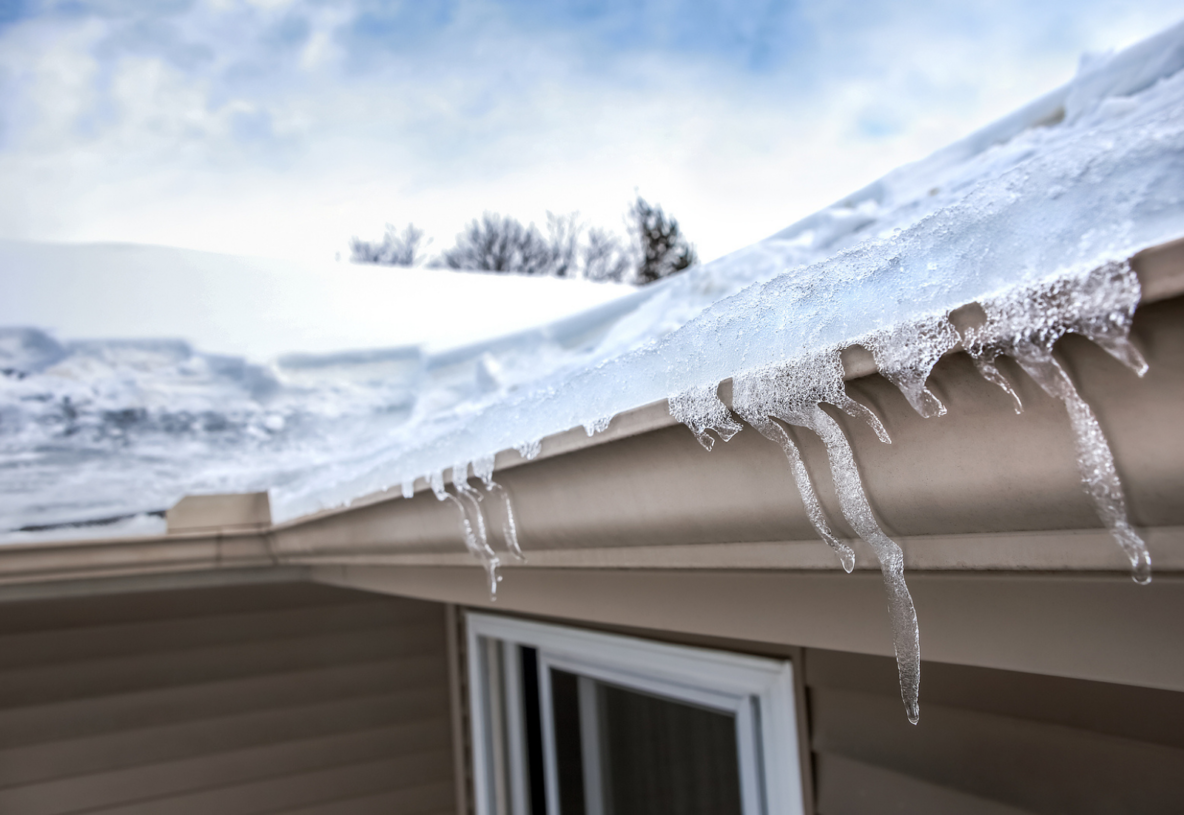Winter has a lot of great things to offer us–winter sports, beautiful snowfalls and cozy days hunkered down with loved ones. Unfortunately, it can also wreak havoc on our roofs, causing damage to structural components and leaving us with a hefty bill and a huge headache to deal with in the spring. What are we referring to? In this post, we’re going to take a look at one of the biggest threats to your roof: ice dams.
How do ice dams form?
A healthy roof is a roof that maintains an even blanket of snow. The attic is cold and the roof is cold. There is no heat escaping, melting snow and causing ice to build up along the eaves.
Conversely, the primary cause of ice dams is a warm attic. When heat escapes from the attic, it warms the roof’s surface, causing snow to melt, run down the roof and refreeze at the roof’s edge. Ice dam formation is exacerbated by warm winter days when daytime temperatures rise above freezing, resulting in additional snowmelt and pooling water that turns to ice in the gutters and along the eaves of your home. Once ice begins to form, it can be difficult to stop. Ice dams continue to grow in size, growing back up the roof and making their way under your shingles.
Can anything be done to avoid this destructive problem?
Keys to ice dam prevention
Fortunately, you don’t have to fall victim to ice dams. There are a few things you can do to help ward them off and protect the integrity of your roof:
- Update insulation
Insulation in old homes can become compressed and less effective over time. Many homes don’t have sufficient insulation in the attic and some don’t have any at all. If you’ve never been in your attic, climb up and assess the insulation situation. If you’ve noticed that the insulation is sparse, blowing in more insulation or hiring a company to do so will keep your attic cold and protect heat from escaping through the envelope of your home.
- Vent systems through the roof instead of into the attic
In some cases, systems are vented into the attic space instead of up through the roof. Hire a professional to vent these systems through the roof and keep warm air from building up in your attic.
- Properly seal roof penetrations
One common culprit of heat loss and ice dam formation is improperly sealed roofing penetrations from HVAC systems, chimneys, etc. Once all the snow and ice are off your roof in the spring, carefully examine your roof and reseal any joints where putty is torn or has pulled away and left the attic’s interior exposed to the outside. This will minimize heat loss and help keep your roof cold.
Hoyt Exteriors is your roofing specialist. If your home or building suffers from ice dams, we can help. Give us a call at 651.212.4965 or contact us here to learn about our ice dam removal service or to set up an appointment!

